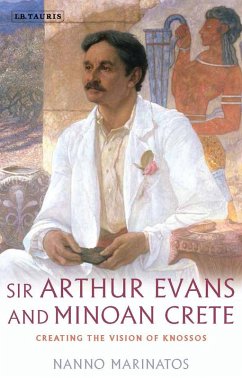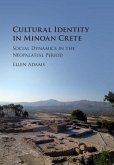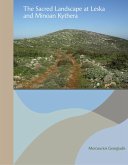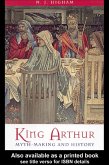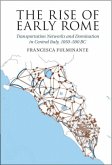Before Sir Arthur Evans, the principal object of Greek prehistoric archaeology was the reconstruction of history in relation to myth. European travellers to Greece viewed its picturesque ruins as the gateway to mythical times, while Heinrich Schliemann, at the end of the nineteenth century, allegedly uncovered at Troy and Mycenae the legendary cities of the Homeric epics. It was Evans who, in his controversial excavations at Knossos, steered Aegean archaeology away from Homer towards the broader Mediterranean world. Yet in so doing he is thought to have done his own inventing, recreating the Cretan Labyrinth via the Bronze Age myth of the Minotaur. Nanno Marinatos challenges the entrenched idea that Evans was nothing more than a flamboyant researcher who turned speculation into history. She argues that Evans was an excellent archaeologist, one who used scientific observation and classification. Evans's combination of anthropology, comparative religion and analysis of cultic artefacts enabled him to develop a bold new method which Sir James Frazer called 'mental anthropology'.
It was this approach that led him to propose remarkable ideas about Minoan religion, theories that are now being vindicated as startling new evidence comes to light. Examining the frescoes from Akrotiri, on Santorini, that are gradually being restored, the author suggests that Evans's hypothesis of one unified goddess of nature is the best explanation of what they signify. Evans was in 1901 ahead of his time in viewing comparable Minoan scenes as a blend of ritual action and mythic imagination. Nanno Marinatos is a leading authority on Minoan religion. In this latest book she combines history, archaeology and myth to bold and original effect, offering a wholly new appraisal of Evans and the significance of his work. Sir Arthur Evans and Minoan Crete will be essential reading for all students of Minoan civilization, as well as an irresistible companion for travellers to Crete.
It was this approach that led him to propose remarkable ideas about Minoan religion, theories that are now being vindicated as startling new evidence comes to light. Examining the frescoes from Akrotiri, on Santorini, that are gradually being restored, the author suggests that Evans's hypothesis of one unified goddess of nature is the best explanation of what they signify. Evans was in 1901 ahead of his time in viewing comparable Minoan scenes as a blend of ritual action and mythic imagination. Nanno Marinatos is a leading authority on Minoan religion. In this latest book she combines history, archaeology and myth to bold and original effect, offering a wholly new appraisal of Evans and the significance of his work. Sir Arthur Evans and Minoan Crete will be essential reading for all students of Minoan civilization, as well as an irresistible companion for travellers to Crete.
Dieser Download kann aus rechtlichen Gründen nur mit Rechnungsadresse in A, B, BG, CY, CZ, D, DK, EW, E, FIN, F, GR, HR, H, IRL, I, LT, L, LR, M, NL, PL, P, R, S, SLO, SK ausgeliefert werden.

